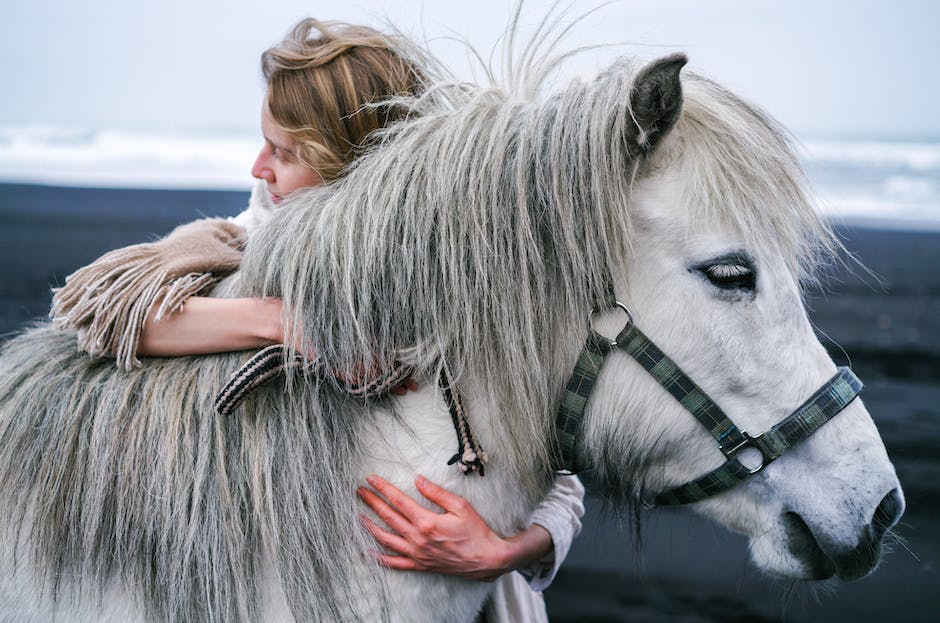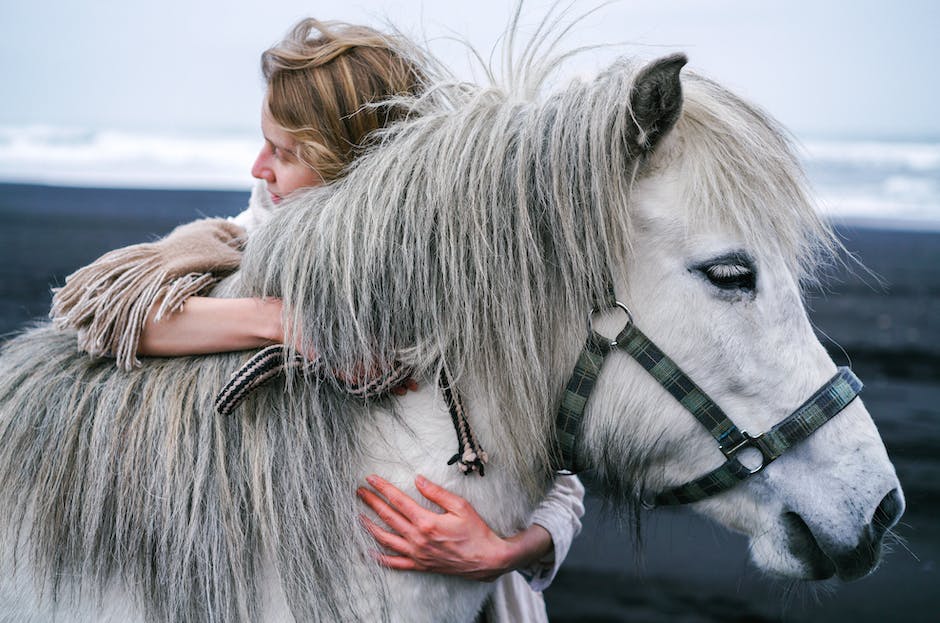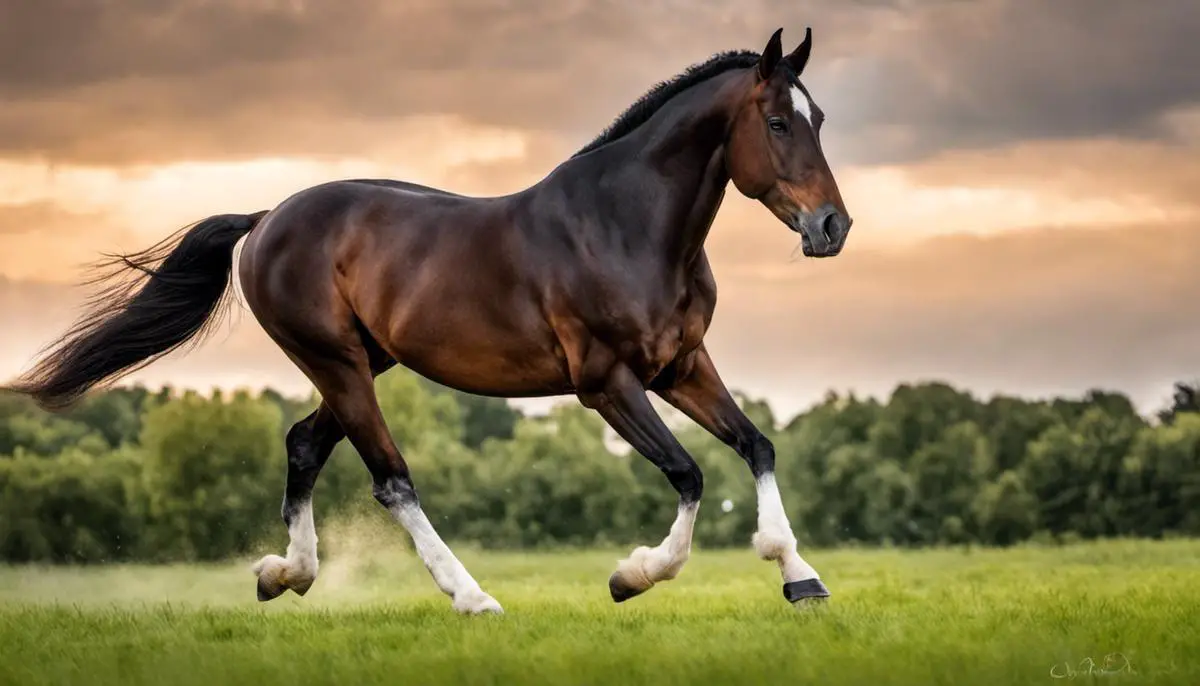In the vast landscape of equine history, the Russian Warmblood has stamped its identity with firm hooves and solid perseverance. Emerging from the vast expanse of Russia and shaped by both human intent and environmental necessity, these sturdy, versatile horses tell a story that is inseparable from the narrative of the people who developed them. In this narrative, the origins of the breed, its roles in history and society, and its characteristics and uses in the present day all come together to create a holistic representation of the Russian Warmblood.
Table of Contents (Horspedia)
Origins and Breeding of the Russian Warmblood
Origins and Initial Breeding Period
The Russian Warmblood, a variety of sport horse, was developed in Russia during the late 19th century to early 20th century. Foundation bloodlines trace back to imported stallions of Dutch, Hanoverian, and Thoroughbred decent. The key individuals who played a significant role in the creation of this breed were predominantly working within the state stud farms or other closely linked institutions.
The aim was to create a breed of horse suitable for various equestrian disciplines, while also having the temperament and endurance to adapt to Russia’s harsh environmental and climatic conditions. The breeders were also keen to establish a horse breed with exceptional athletic prowess and versatility.
Selective Breeding Practices
Selective breeding practices played a pivotal role in the evolution of the Russian Warmblood. Breeders meticulously selected high-quality specimens from several breeds, notably the Orlov Trotter, Thoroughbred, and Dutch Warmblood. Imported European stallions were crossbred with local mares to produce offspring with the desired traits.
Each horse was evaluated for its muscular structure, height, endurance, temperament, and agility. The reproductive efficiency of the mares was also observed. This rigorous selection process ensured that only the best quality horses were propagated, forming a strong foundation for the Russian Warmblood breed.
Impact of Geographical and Climate Conditions
The geographical location and severe climatic conditions of Russia had a profound influence on the development of the Russian Warmblood. High cold tolerance was an essential trait. The breed was also expected to perform in a variety of tasks and environments, including urban carriage pulling, rural riding, and competitive disciplines under varying climatic conditions.
As a direct result, Russian Warmbloods are known for their sturdy constitution, adaptability, and resistance to illnesses common among many horse breeds. These conditions pressured the breed to evolve with robust strength, resilience and versatility, which is why many equine enthusiasts today appreciate Russian Warmbloods.
The Evolution of the Russian Warmblood
In existence since the late 19th and early 20th centuries, the breeding processes over the years have transformed the Russian Warmblood from a workhorse to an exceptional sport horse. Today, they are renowned for their finesse in dressage and stellar performances in show jumping.
Ever since the Russian Stud Book was structured in 1979, it has played a fundamental role in upholding the breed standards, thereby streamlining the breeding procedures.
With over a century of selective breeding, the Russian Warmblood has emerged robust and versatile, with a high tolerance for challenging weather conditions. Reflecting the versatility of Russia’s geographical conditions, the breed has carved its niche as a multipurpose horse breed. Presently, this breed continues to excel in various sporting disciplines, while mastering the knack to thrive in extreme climatic conditions.

Role of the Russian Warmblood in History and Society
A Look into the Roots of the Russian Warmblood
Making their initial appearance in the 19th century Russia, Russian Warmbloods were indispensable in both military and agricultural sectors. To create this sturdy breed, local Russian mares were crossbred with European import stallions, chiefly from England, Germany, and France. The end product was a robust, versatile horse, known for its endurance and weight-carrying capabilities. The Orlov Trotter, Budyonny, and Don breeds profoundly influenced the development of the Russian Warmblood.
Russian Warmbloods in the Military
Russian Warmbloods have held considerable value in military landscapes throughout history. Their sturdy, enduring qualities made them ideal for cavalry use as well as for pulling artillery. They served in various wars, including World War I and World War II. Russian Warhorses were efficient in transporting soldiers over long distances and harsh terrains, and their size and strength contributed greatly to their effectiveness in combat scenarios.
The Agricultural Impact of Russian Warmbloods
In civilian life, Russian Warmbloods were extensively used in farming and other agricultural activities. Their capabilities to pull heavy loads made them ideal for working on farms, particularly in the Northern parts of Russia, where the soil was often harsh and difficult to cultivate. They were invaluable for the plowing, seeding, and harvesting processes, thereby playing an integral role in Russia’s agricultural economy.
Status Symbols in Society
Besides their functional roles, Russian Warmbloods also served as status symbols. Their sleek appearance, combined with their strength, speed, and impressive endurance, made them a prized possession for the wealthy. Their use extended to transportation, riding for pleasure, hunting, and showing. Russian nobility often owned Warmbloods, and these horses became a signifier of wealth and status in Russian society.
Transition to Sporting and Show Horses
Over the years, the Russian Warmblood’s role has shifted significantly. While they still hold value as working animals, breeders have also honed them for use in various equestrian sports. These include dressage, show jumping, eventing, and driving. They’ve become desirable for their athleticism, agility, and intelligent yet calm temperament. Their versatility makes them competitive in various equestrian disciplines, bringing the breed to prominence on the international stage.
Continuing the Legacy of the Russian Warmbloods
In the face of the 21st century’s evolving breeding standards and requirements, steps have been taken to protect and uphold the integrity of the Russian Warmblood lineage. Selective breeding programs have been set into motion with the goal to not only maintain the breed’s historic characteristics, but to enhance their size, athleticism, and color palette. This endeavor is supervised by the Russian Stud Book along with the Russian Horse Breeding Society, who work in tandem to guarantee the breed’s ideal growth and propagation.

Modern Day Russian Warmblood: Characteristics and Use
The Magnificent Features of Russian Warmbloods
The Russian Warmblood stands as a breathtaking beacon of elegance and strength among horse breeds. Typically, they reach the height of 16.2 to 17 hands, which is approximately 5.5 to 5.7 feet. Known for their muscular and robust stature they command attention. They parade a diversity of coat colors, albeit black, bay, chestnut, and gray being the most prevalent. Noteworthy attributes such as a refined neck, captivating eyes, linear profile, powerful hindquarters, and sturdy legs make them a spectacle of grandeur.
Versatility and Primary Uses
The Russian Warmblood’s versatility truly sets it apart as a breed. Historically, these horses were utilized as utility animals, participating in farm work, transportation, and warfare. However, they have since proven their worth in a range of equestrian sports, including dressage, show jumping, eventing, and harness racing. Their physical strength and endurance also make them excellent choices for longer riding journeys.
Health and Preservation Status
With its robust nature and centuries-old breeding lineage, the Russian Warmblood is generally a healthy breed. Like any horse, however, it does require regular veterinary check-ups, appropriate nutrition, and routine hoof and dental care to maintain optimal health.
Lifespan and Health Concerns
A Russian Warmblood can be expected to live for approximately 20 to 25 years, contingent upon their health and care. While generally robust, these horses can sometimes be prone to certain ailments. The most common health issues include laminitis, a painful condition that affects the horse’s hooves, and gastric ulcers, both often linked to dietary factors.
Ongoing Breeding Programs
Breeding programs are integral to the preservation and improvement of the Russian Warmblood breed. Many stud farms in Russia, as well as a number in Europe and North America, maintain breeding programs with these aims in mind. These programs typically emphasize the selection of horses with good conformation, favorable temperaments, and exceptional athleticism.

Through an exploration spanning from the earliest breeding practices to the horse’s prominent roles in society, all the way to its present-day manifestation, we’ve journeyed through the past and present of the Russian Warmblood. Not just the product of carefully curated breeding, but a testament to the geographical, cultural and environmental factors that shaped its development and evolution. Now, as these horses serve as versatile companions, excelling in a variety of equestrian sports, we understand more deeply the intricate skein of narratives that the Russian Warmblood carries in its robust physique and spirited character. These horses, a product of history and humanity’s desire for a reliable, robust companion, continue to serve humanity, embodying steadfast resilience and solidity on four hooves.

